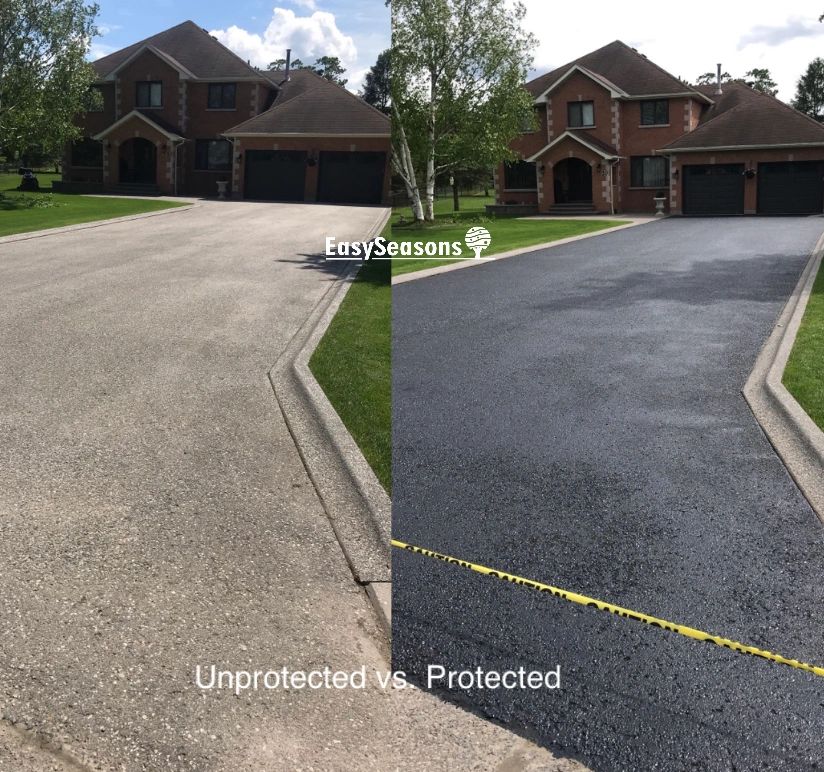Hot Mix Asphalt: A Sustainable Service for Sidewalk
Hot Mix Asphalt (HMA) has become a leading sustainable choice for sidewalk solutions, supplying a myriad of ingenious modern technologies and environmental benefits. Its capacity to reuse materials and minimize power intake presents a compelling instance for its adoption in road building jobs. Moreover, the long-lasting efficiency and resilience of HMA make it a favored option for infrastructure advancement. As the demand for eco-friendly building methods grows, checking out the subtleties of HMA's sustainability can supply valuable insights right into the future of pavement options.
Ecological Benefits of Hot Mix Asphalt

Furthermore, Hot Mix Asphalt assists to mitigate city warmth island impacts. Its dark color takes in sunshine, minimizing the amount of heat showed back right into the environment compared to lighter-colored pavements. This can lower ambient temperature levels in city locations, lowering the need for air conditioning and inevitably lowering energy usage.
Additionally, Hot Mix Asphalt adds to boosted stormwater management. Its permeable nature enables water to recharge and penetrate the sidewalk groundwater materials, lowering overflow and the risk of flooding. These environmental benefits make Warm Mix Asphalt a sustainable choice for leading roadways and highways.
Energy Effectiveness in HMA Production
Is energy efficiency an important aspect in the manufacturing of Warm Mix Asphalt (HMA)? Energy plays a significant function in the production of HMA, impacting both expense and ecological sustainability. One crucial facet of energy effectiveness in HMA production is the use of warm mix asphalt (WMA) innovations.
In addition, developments in plant technologies have led to even more energy-efficient HMA manufacturing processes. By maximizing power use in HMA manufacturing, the industry can decrease its carbon impact while keeping high-grade sidewalk materials.
Recyclability of Warm Mix Asphalt
The recyclability of Hot Mix Asphalt (HMA) is a pivotal element of its sustainability and lasting environmental effect. HMA is just one of the most recycled products in the United States, with over 100 million lots of redeemed asphalt pavement (RAP) being recycled yearly in new pavement building. Reusing HMA provides several environmental advantages, such as lowering the need for virgin materials, decreasing power consumption throughout manufacturing, and reducing the quantity of waste sent to garbage dumps.
The procedure of reusing HMA involves grating the existing sidewalk, crushing it into smaller sized pieces, and mixing it with new accumulation and asphalt binder to create a recycled mix. This recycled mix can commonly do along with or also better than conventional HMA, while calling for fewer raw products and creating lower greenhouse gas emissions. By including RAP right into brand-new sidewalk projects, roadway agencies can conserve all-natural sources, decrease costs, and minimize the environmental footprint of roadway building and upkeep activities. In general, the recyclability of HMA plays a substantial duty in promoting sustainable techniques within the pavement market.
.png)
Long-Term Efficiency of HMA
Asphalt pavements show longevity and durability over a prolonged duration, reflecting the long-lasting performance of Hot Mix Asphalt (HMA) The durability of HMA can be attributed to its capacity to stand up to heavy web traffic tons, rough climate condition, and the results of aging. Studies have actually shown that properly designed and appropriately created HMA sidewalks can last for 20 years or more with routine upkeep. The trick to maximizing the long-term efficiency of HMA depends on utilizing premium products, following finest practices in building, and carrying out efficient upkeep strategies. Proper drain, regular examinations, and timely repairs are necessary for maintaining the structural integrity of HMA sidewalks gradually. Furthermore, improvements browse around here in HMA modern technology, such as the usage of polymer-modified binders and warm mix asphalt, have additionally enhanced the toughness and longevity of HMA sidewalks. By focusing on high quality building and maintenance practices, HMA remains to confirm itself as a affordable and lasting service for durable sidewalk framework.

HMA: Toughness and Sustainability
Demonstrating both durability and sustainability, Warm Mix Asphalt (HMA) has actually come to be a keystone in the you can check here construction of durable sidewalk facilities - regrading. HMA's longevity stems from its capacity to endure hefty lots, rough weather condition problems, and high traffic volumes, making it a trustworthy choice for highways, freeways, and flight terminal runways. The structure of HMA, which usually consists of aggregates, binder, and filler, plays an essential role in enhancing its longevity and resistance to tear and use
Furthermore, HMA's sustainability hinges on its recyclability and energy-efficient production procedure. The capacity to reuse reclaimed asphalt sidewalk (RAP) in new HMA mixtures reduces the need for virgin materials and lessens the ecological impact of pavement building and construction and upkeep. Furthermore, the power effectiveness of generating HMA depends on its lower mixing temperature levels compared to other pavement products, bring about reduced energy usage and greenhouse gas emissions.
Verdict
In verdict, warm mix asphalt (HMA) supplies a sustainable solution for sidewalk with its ecologically friendly characteristics. HMA's recyclability, power performance in production, and long-term durability make it an eco-friendly selection for roadway construction.
HMA is one of the most recycled materials in the United States, with over 100 million loads of reclaimed asphalt sidewalk (RAP) being reused annually in brand-new pavement construction.The procedure of recycling HMA involves grating the existing pavement, squashing it into smaller pieces, and blending it with new accumulation and asphalt binder to produce a recycled mix.Asphalt sidewalks demonstrate toughness and durability over an extended duration, mirroring the long-lasting efficiency of Hot Mix Asphalt (HMA) In addition, improvements in HMA technology, such as the usage of polymer-modified binders and warm mix check my reference asphalt, have better enhanced the longevity and longevity of HMA sidewalks. The ability to reuse redeemed asphalt pavement (RAP) in brand-new HMA combinations decreases the need for virgin materials and lessens the ecological impact of pavement building and construction and upkeep.